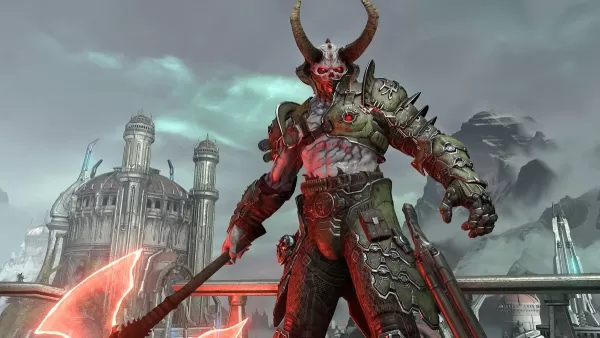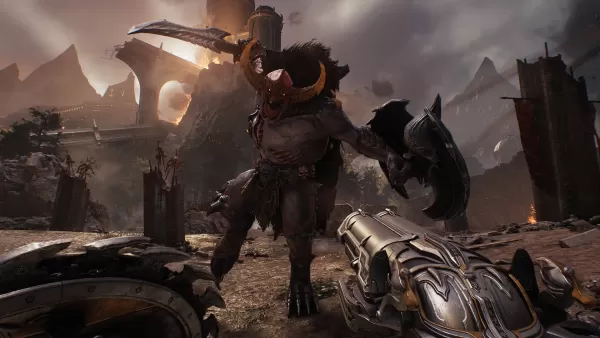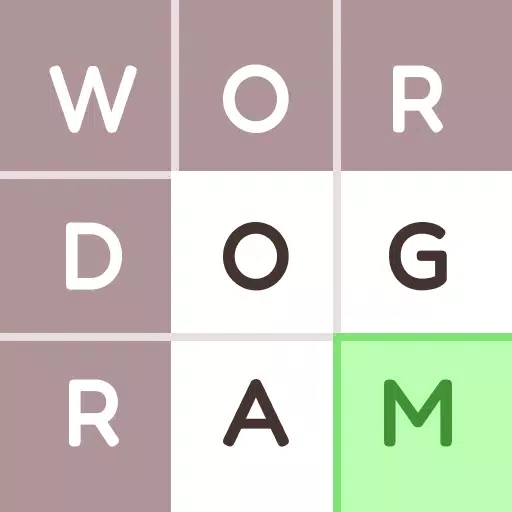When director Hugo Martin announced that the guiding principle for Doom: The Dark Ages was "stand and fight" during Xbox's Developer Direct earlier this year, I was instantly captivated. This concept sharply contrasts with id Software's previous title, Doom Eternal, which was built around fast-paced, constantly moving combat. However, there's one enemy in Eternal that embodies this "stand and fight" philosophy—the Marauder. This enemy has sparked significant debate within the community, with many players disliking it, while I find myself uniquely fond of it. The moment I discovered that the combat in The Dark Ages hinges on reacting to bright green lights—just like the key to defeating the Marauder—I knew I was hooked.
Don't worry, The Dark Ages doesn't confine you to a frustrating, one-on-one duel akin to the Marauder encounters in Eternal. While it does introduce the Agaddon Hunter, an enemy with a bulletproof shield and a lethal combo attack, the essence of Eternal's challenging battles is integrated into the entire combat system of The Dark Ages. The mechanics and strategies inspired by the Marauder have been reimagined and woven into the core of The Dark Ages' combat. The outcome is a combat experience that retains the strategic depth of a Marauder fight without the associated frustrations.
The Marauder stands out in Doom Eternal for compelling players to change their usual tactics. Typically, Eternal demands players to dash around arenas, efficiently dispatching lesser enemies while juggling encounters with larger threats. The game has often been likened to a management sim, where players must juggle resources, movement, and weaponry. The Marauder disrupts this flow entirely, requiring undivided attention and often encountered in isolated battles. In larger fights, the best strategy is to evade its attacks, clear out other enemies, and then focus on the Marauder.
 Doom Eternal's Marauder is one of the most controversial enemies in FPS history. | Image credit: id Software / Bethesda
Doom Eternal's Marauder is one of the most controversial enemies in FPS history. | Image credit: id Software / Bethesda
Standing still isn't what "stand and fight" means here—it's about mastering the battlefield through strategic positioning. Getting too close to the Marauder results in a near-undodgeable shotgun blast, while staying too far away invites a barrage of easily dodged projectiles. The trick is to provoke the Marauder's axe swing, as this is the only moment when its energy shield drops, leaving it vulnerable. When its eyes flash bright green, that's your cue to strike within that brief window.
A similar bright green signal is crucial in Doom: The Dark Ages. In homage to the original Doom, demons unleash volleys of projectiles akin to bullet hell games. Within these volleys are special green missiles that can be parried using the Doom Slayer's new shield, sending the projectiles back at the demons. Early on, this serves as a defensive maneuver, but as you unlock the shield's rune system, parrying becomes a powerful offensive tool, capable of stunning enemies with lightning or activating an auto-targeting shoulder cannon.
Navigating the battlefields of The Dark Ages feels like a series of focused one-on-one battles against various formidable demons. While survival doesn't hinge solely on these green signals, mastering the shield runes and integrating parrying into your combat strategy significantly enhances your effectiveness. Much like with the Marauder, you need to find the right distance and timing, maneuvering to catch the green projectiles and then reacting quickly to execute the parry. This emphasis on focus and positioning transforms your journey into a series of intense stand-offs, echoing the Marauder battles.
The Marauder's detractors often criticized it for disrupting Doom Eternal's flow, requiring a different approach than the game's usual tactics. This is precisely why I appreciate it—it forces a shift from the balletic flow to a more deliberate, dance-like challenge. Doom Eternal already pushed the boundaries of first-person shooters, and the Marauder further challenges players to think outside the box. While I enjoy this twist, I understand the frustration it can cause.
 While the Agaddon Hunter may be the closest to the Marauder in The Dark Ages, every demon incorporates elements of Eternal's most challenging foe. | Image credit: id Software / Bethesda
While the Agaddon Hunter may be the closest to the Marauder in The Dark Ages, every demon incorporates elements of Eternal's most challenging foe. | Image credit: id Software / Bethesda
Doom: The Dark Ages addresses this by integrating various "dances" into its combat system. Each major enemy type has its own unique green projectile or melee attack, requiring different strategies. For example, the Mancubus launches energy "fences" with green "pillars" at the ends, necessitating side-to-side movement to parry effectively. The Vagary sends out volleys of spheres, akin to dodging tennis balls, while the Revenant, reminiscent of the Marauder, is only vulnerable after you deflect its green skulls.
By making every demon demand a unique approach, The Dark Ages avoids the jarring introduction of new enemies. Even though the Agaddon Hunter and Komodo present a challenge with their aggressive melee attacks, players are already accustomed to adapting their tactics. This wasn't the case with the Marauder, which clashed with Eternal's established mechanics of matching guns to demons.
The Marauder's issue wasn't its design but the unexpected shift in gameplay it introduced. Doom: The Dark Ages prepares players for this by making reaction-based mechanics central to the entire experience, rather than a sudden surprise. While this makes the challenge less intense—the parry window is more forgiving than the Marauder's eye flash—the core idea of timing your strikes to green cues remains intact. The Dark Ages reinterprets these concepts, yet they remain unmistakably familiar. You stand and you fight.















